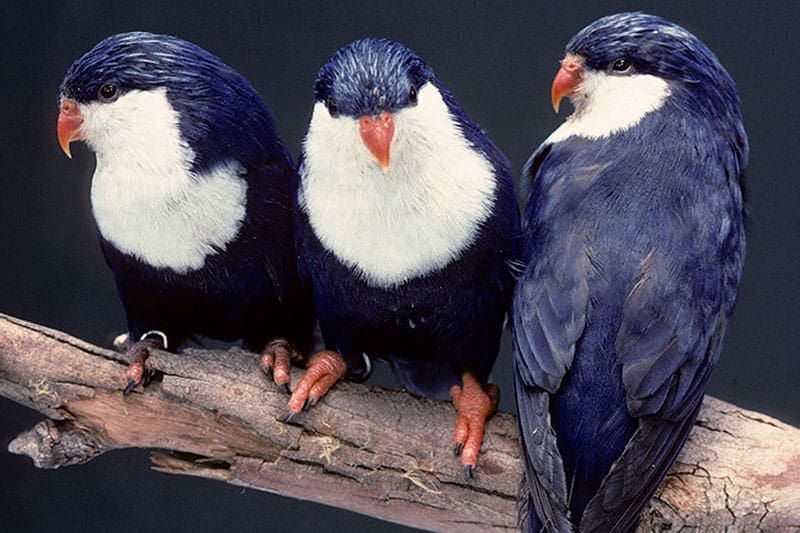Blue Lorikeet Conservation
The Blue-Lorikeet (Vini peruviana) is seeing its population decline, with extinctions having occurred on islands in its range. Introduced predators such as ship rats and domestic cats are threatening their numbers. In addition, predicted increased storm severity due to climate change and the cumulative effects of breeding failures could accelerate its extinction.
The World Parrot Trust is helping to secure a future for Blue Lorikeets. In 2010, in collaboration with the Cook Islands Natural Heritage Trust and the University of Leeds, the WPT funded a survey on the island of Aitutaki to determine the extent of Cyclone Pat’s impact on the Blue Lorikeet’s numbers. The study found that the storm caused the loss of half the island’s population, leaving an estimated 1448 birds. The event changed the demographics of this group, as virtually all of the juvenile birds of the breeding season were lost.
In 2023, the World Parrot Trust in partnership with two local agencies, the Cook Islands Natural Heritage Trust and Te Ipukarea Society, began a project funded by the Pacific Development and Conservation Trust aimed at increasing awareness about the risk of ship rats to the Aitutaki population and promoting the protection of nests. The same project seeks to estimate Blue Lorikeet numbers on the island.
Status: IUCN Vulnerable / CITES Appendix II.
Population: 6500-9400 individuals, decreasing.
Threats: This lorikeet has a restricted range. Extinctions have occurred on many islands within this species’ range. Is at risk from colonised predators, habitat loss and increasingly severe weather events. Although trade is illegal, birds are still captured and sold on Rangiroa.
Range: Occurs on the Society Islands and W Tuamotu Archipelago; formerly further afield. Likely introduced to Aitutaki, S Cook Islands by Polynesians in the late 1700s.
Natural history: This lorikeet is seen in small groups in coconut plantations or gardens with flowering fruit trees. On Aitutaki, it prefers mixed woodland with banana trees and coconut palms, and plantations with shade trees and tall forest. Its diet includes pollen, nectar, soft fruits, flowering plants and their fruit, such as coconut, banana, hibiscus, mango and some insects. Breeding is December-January; nest is in a tree limb or trunk cavity.

